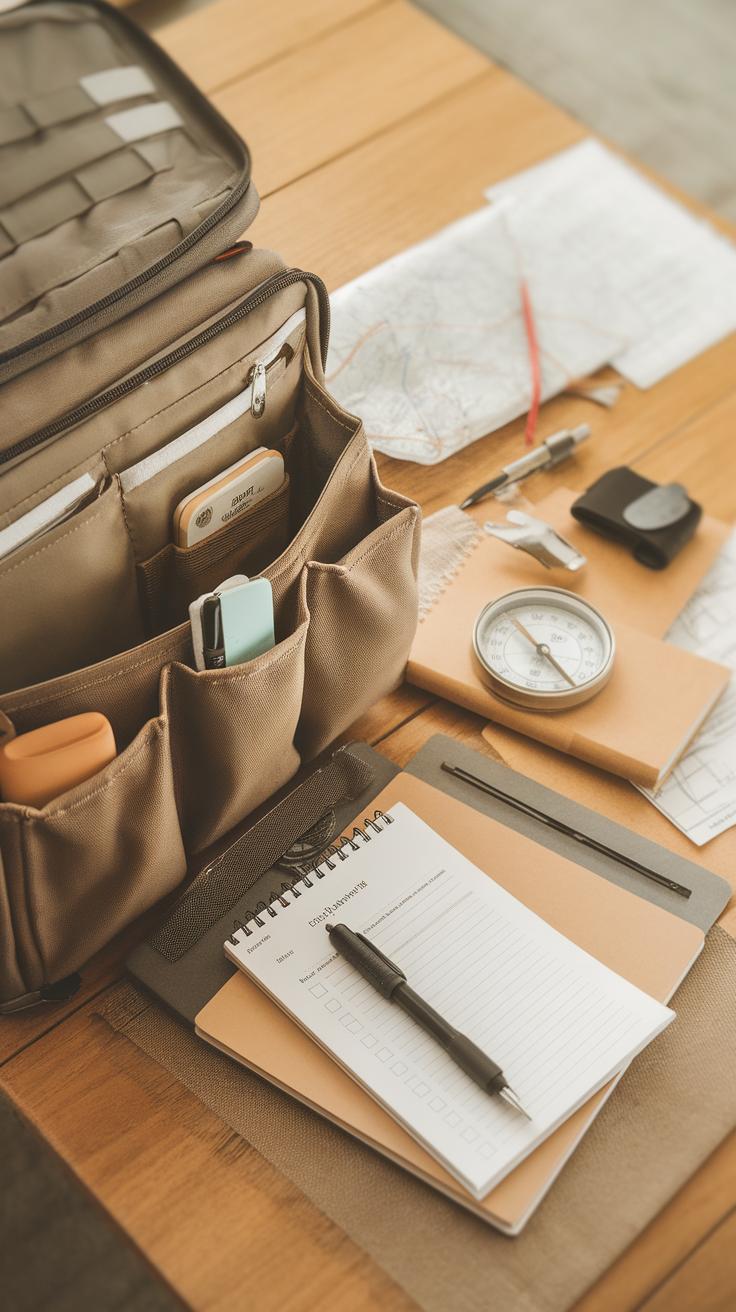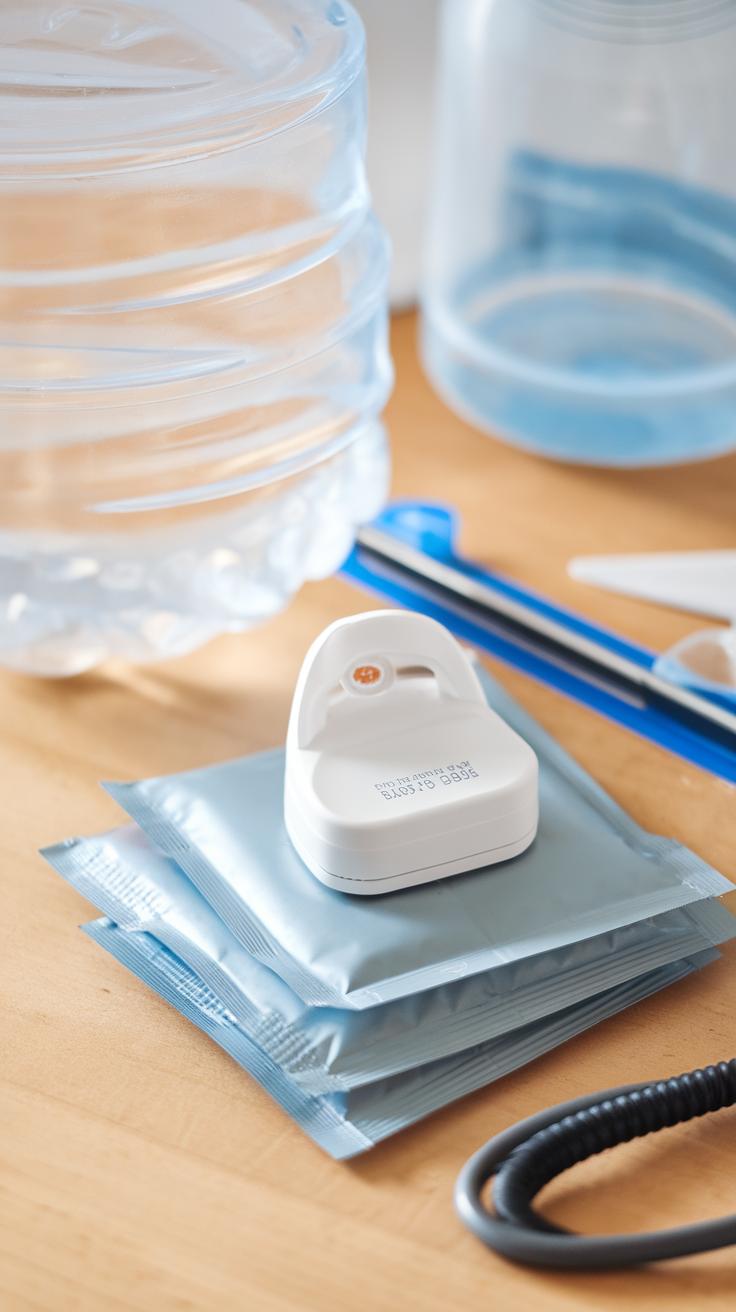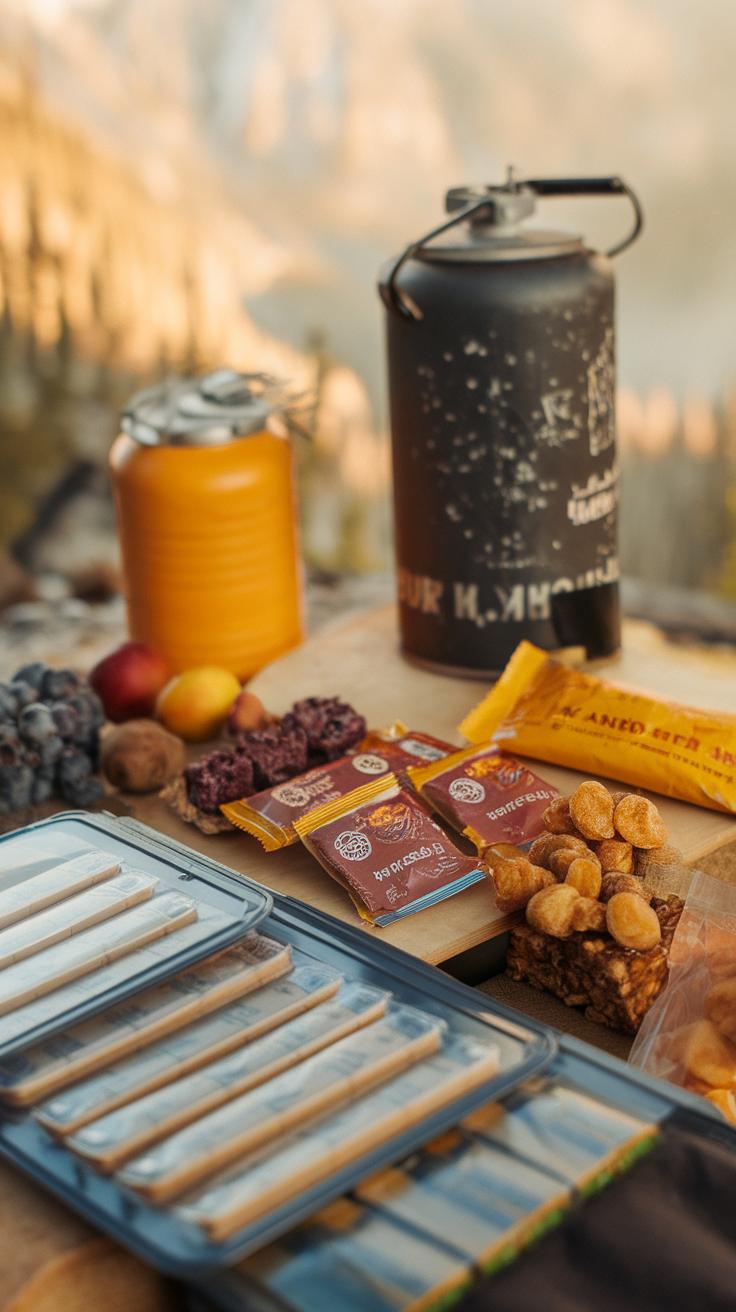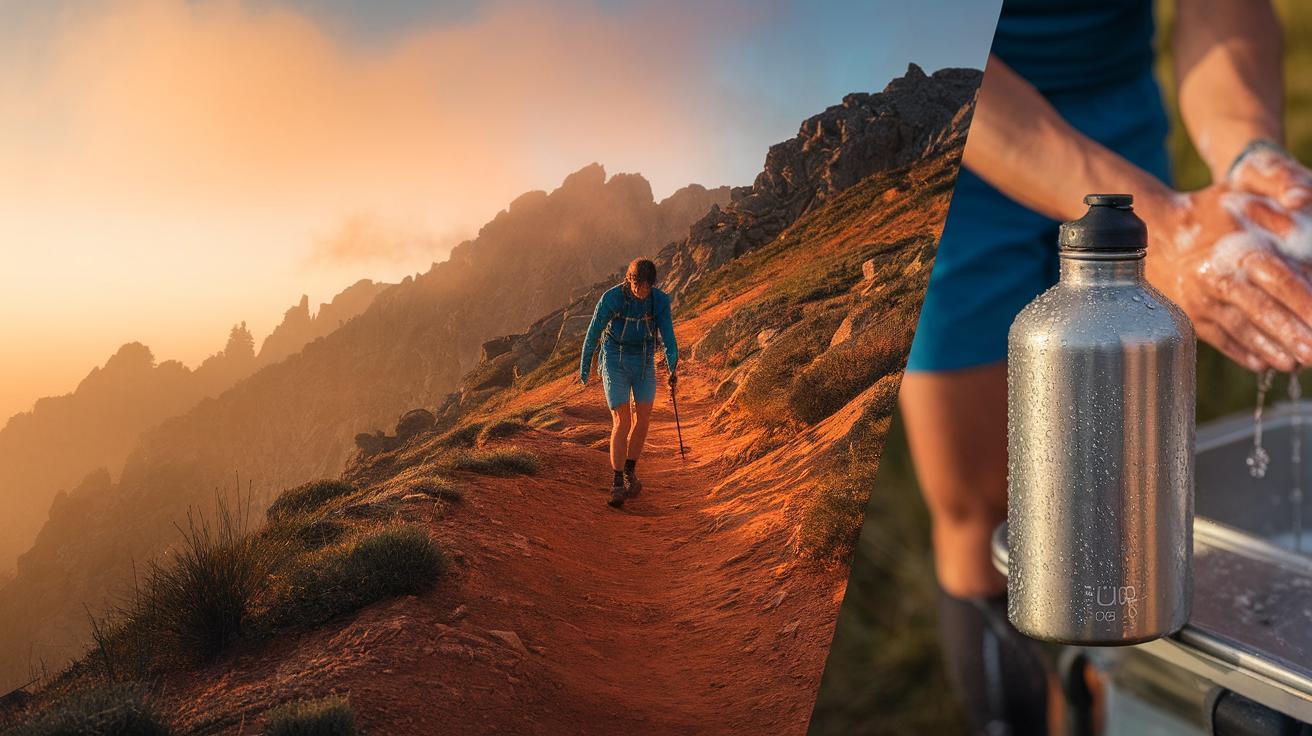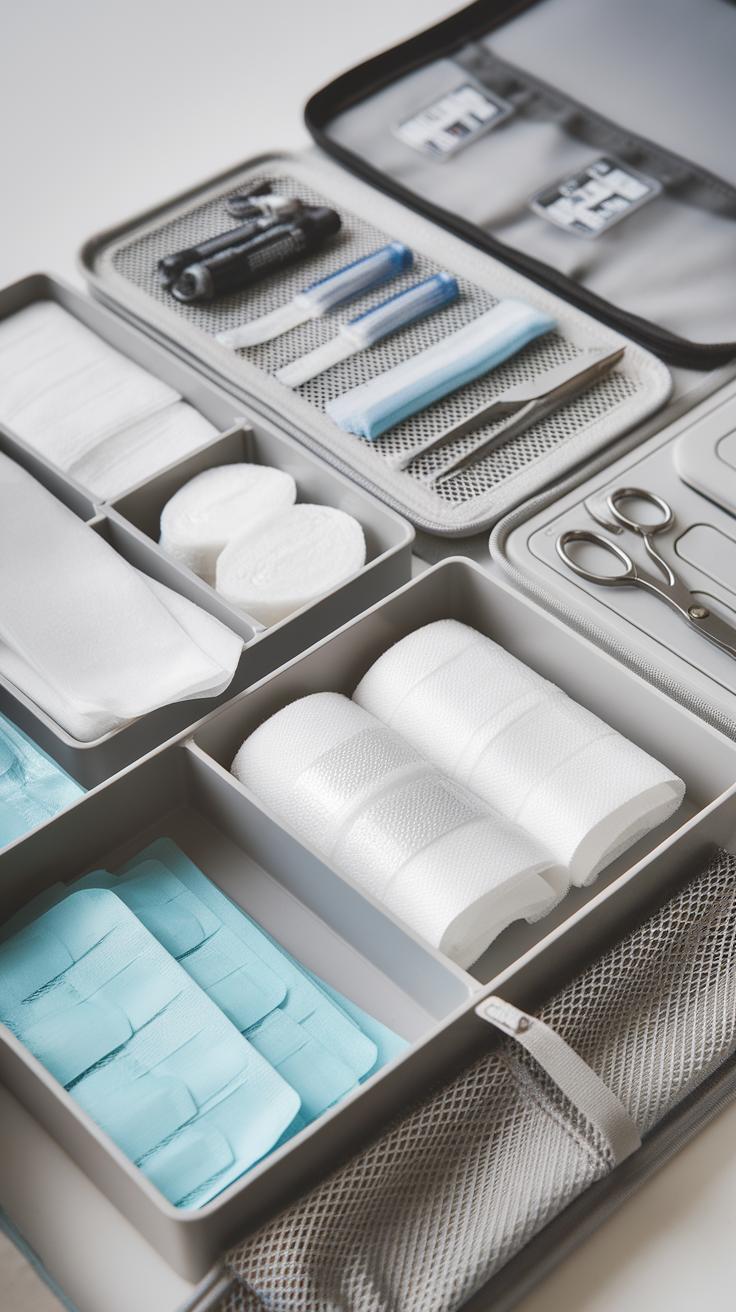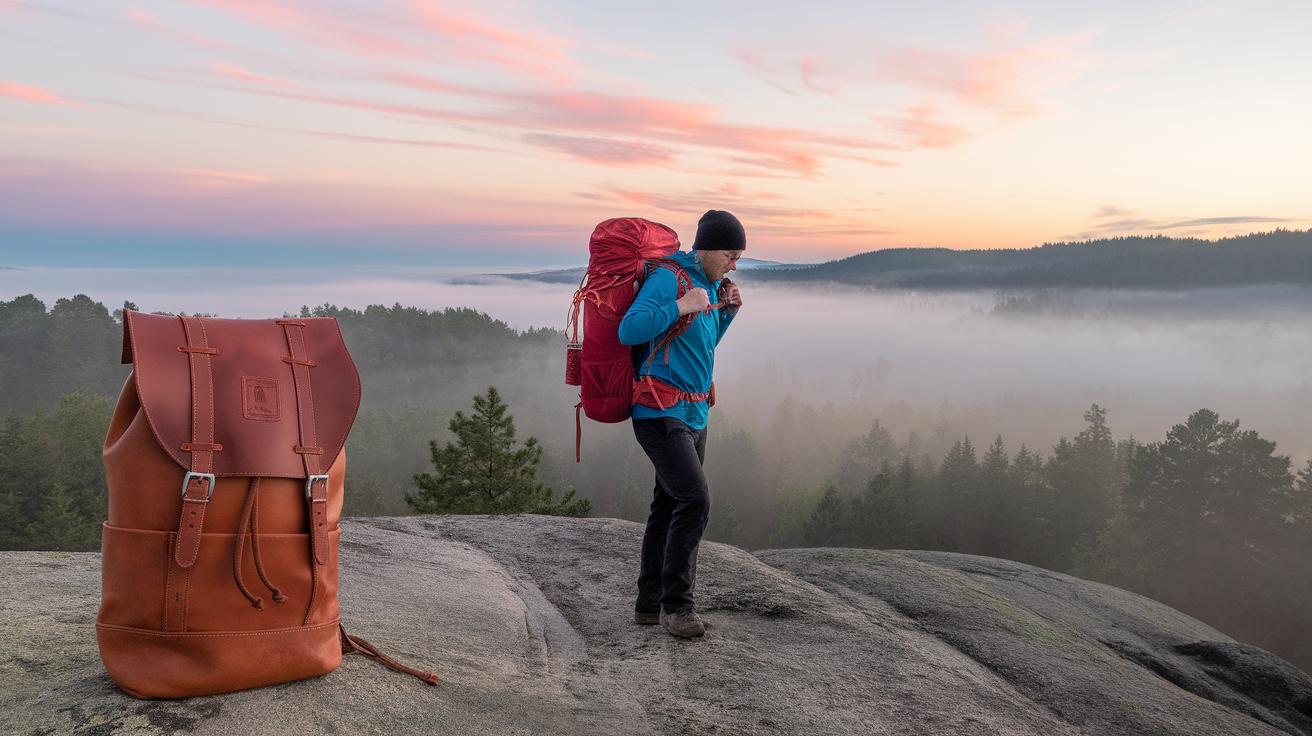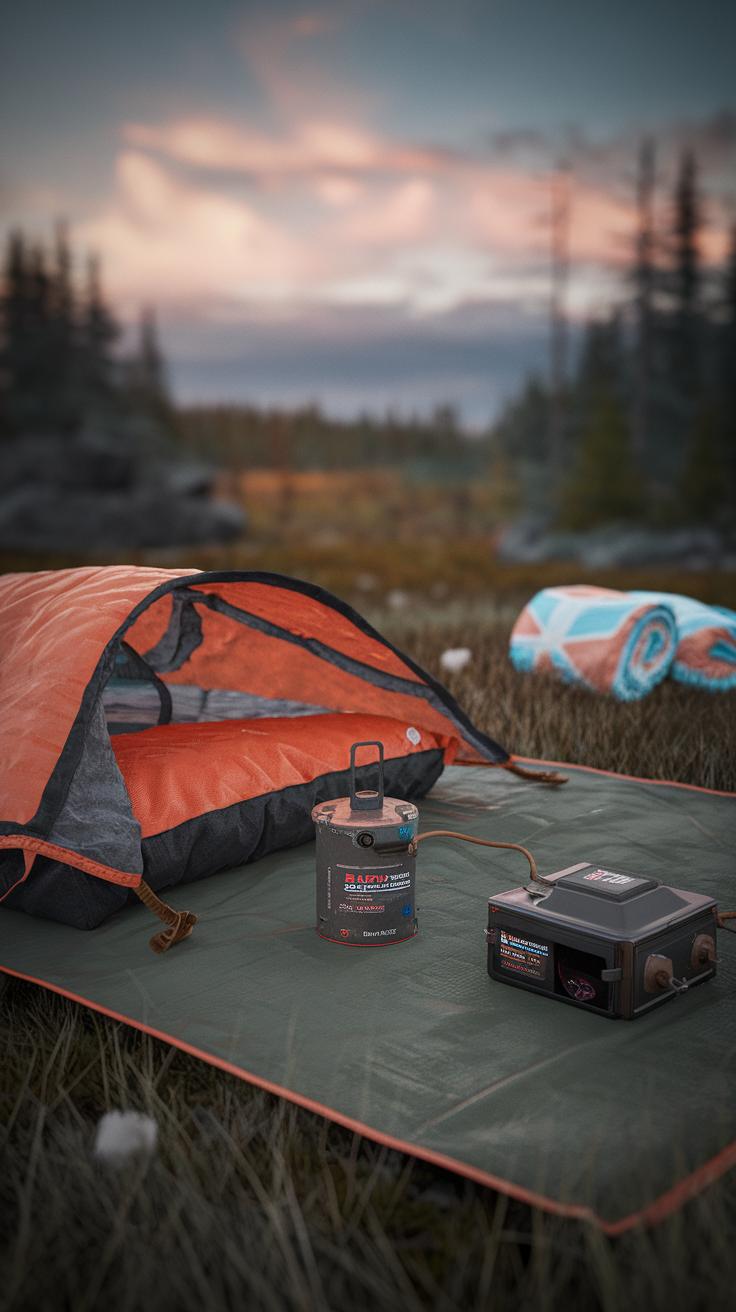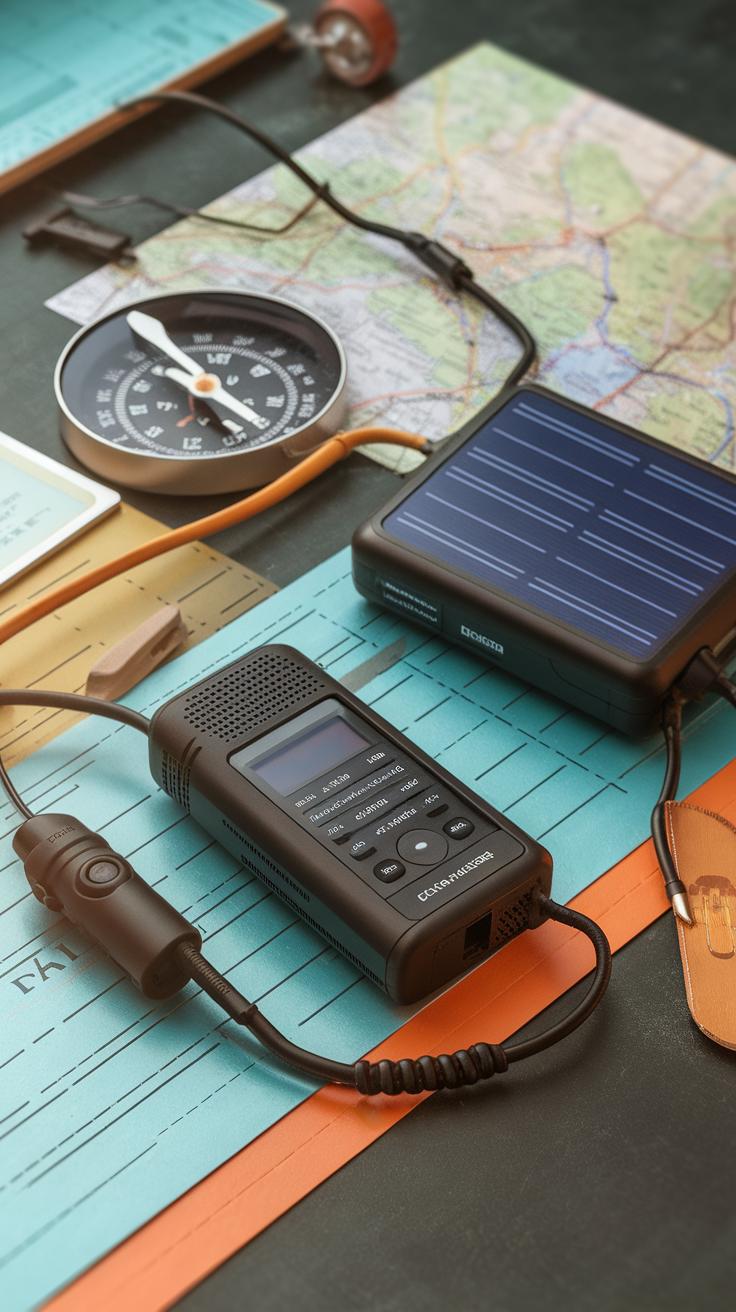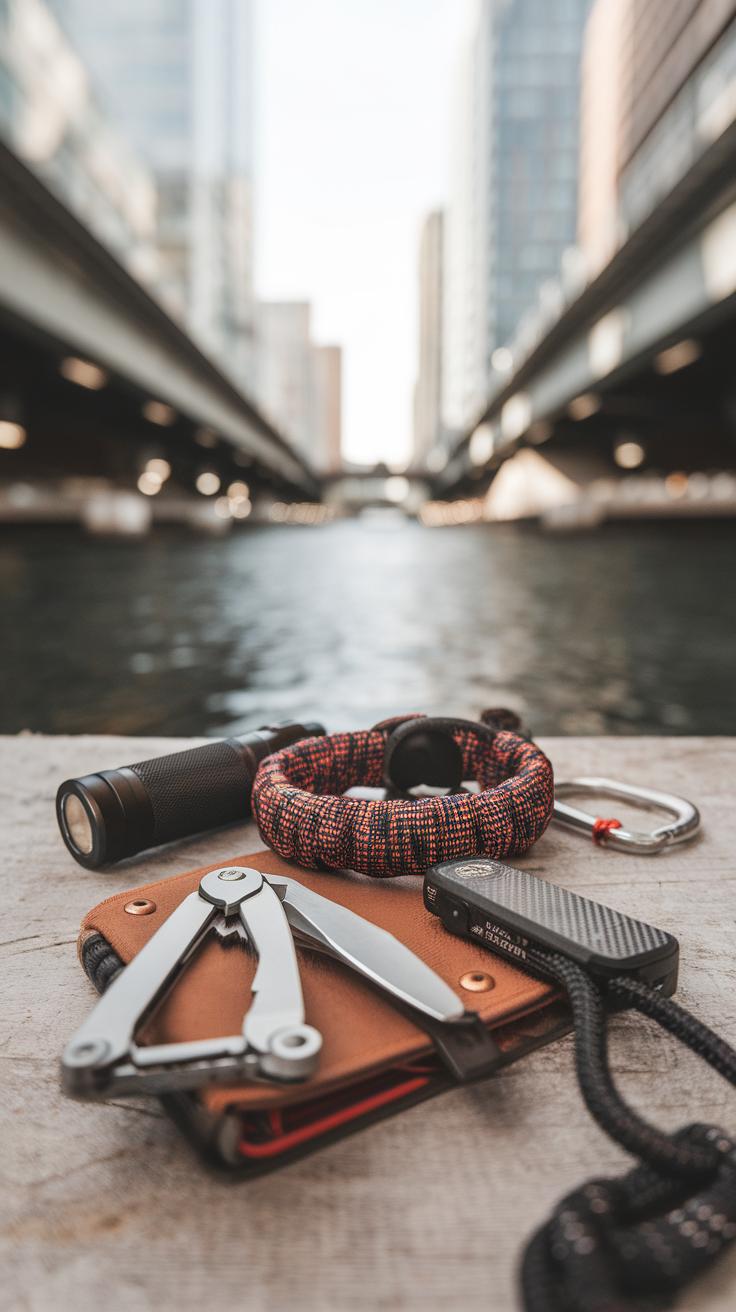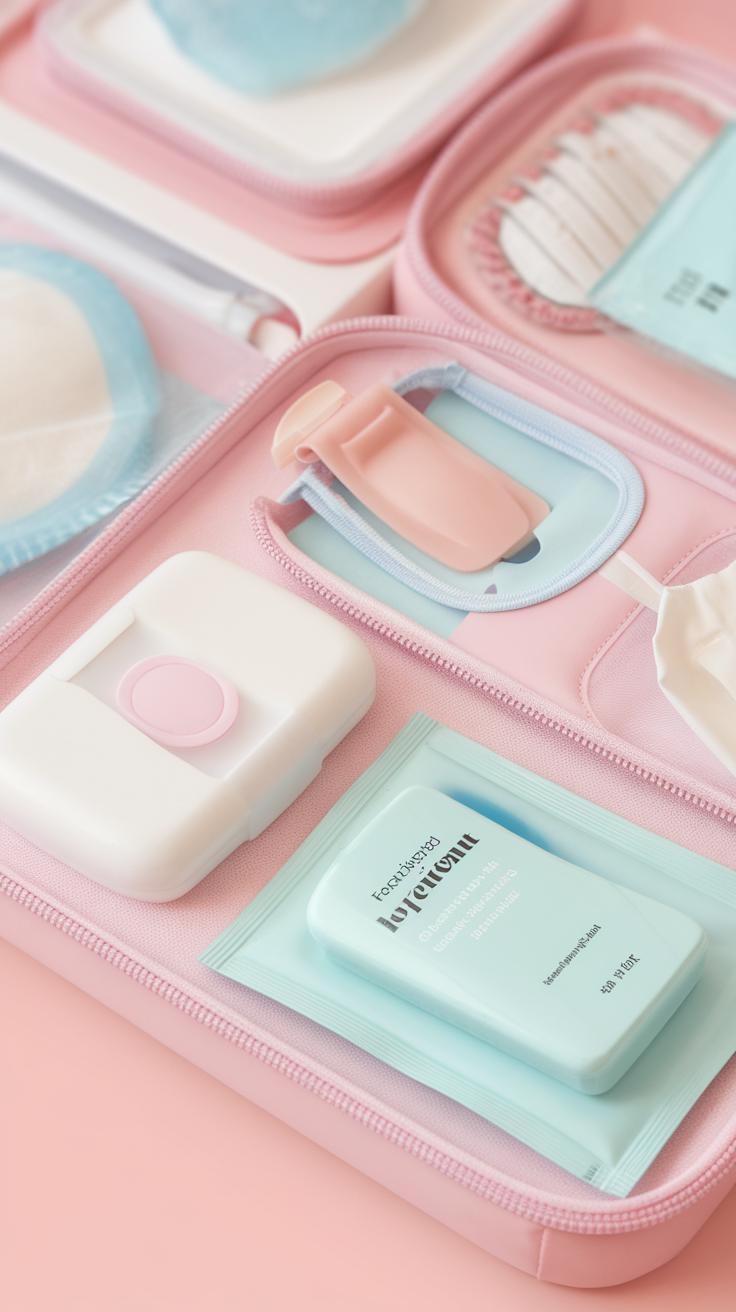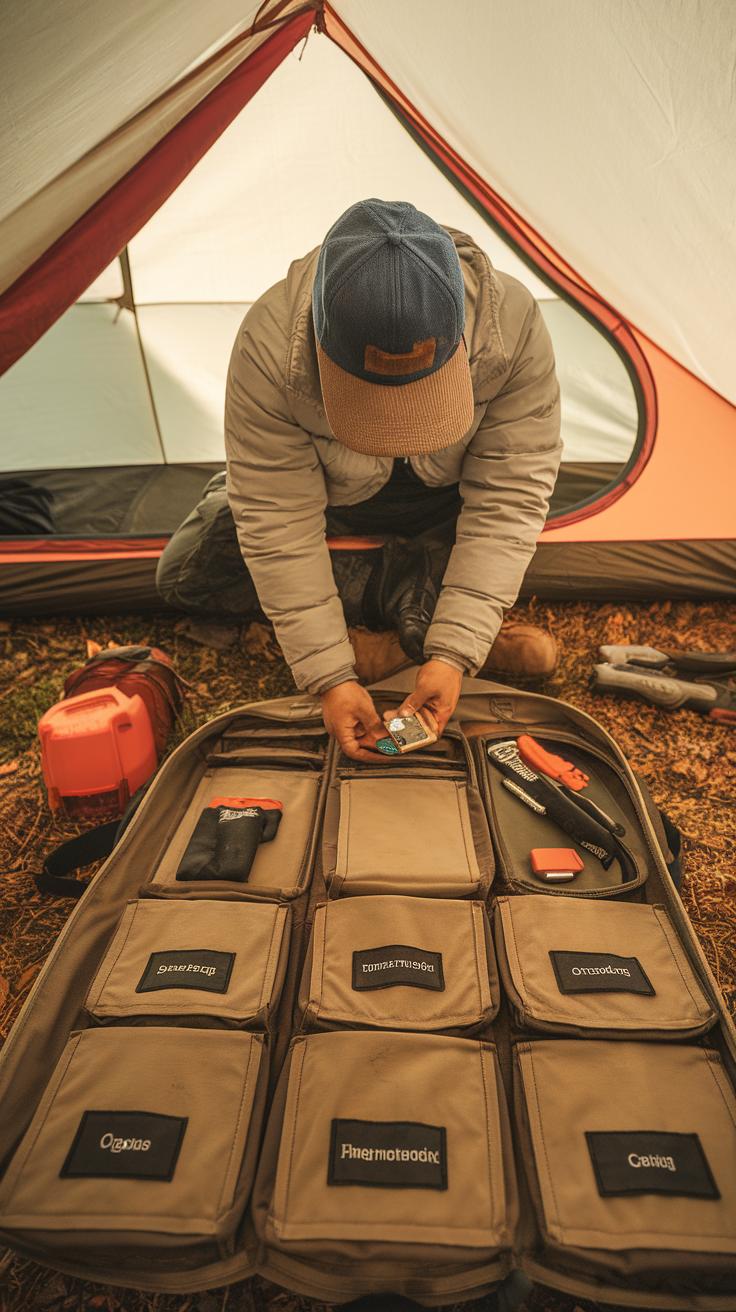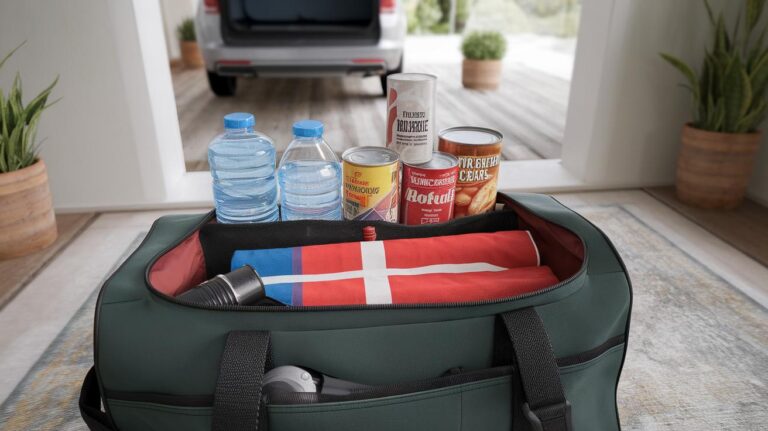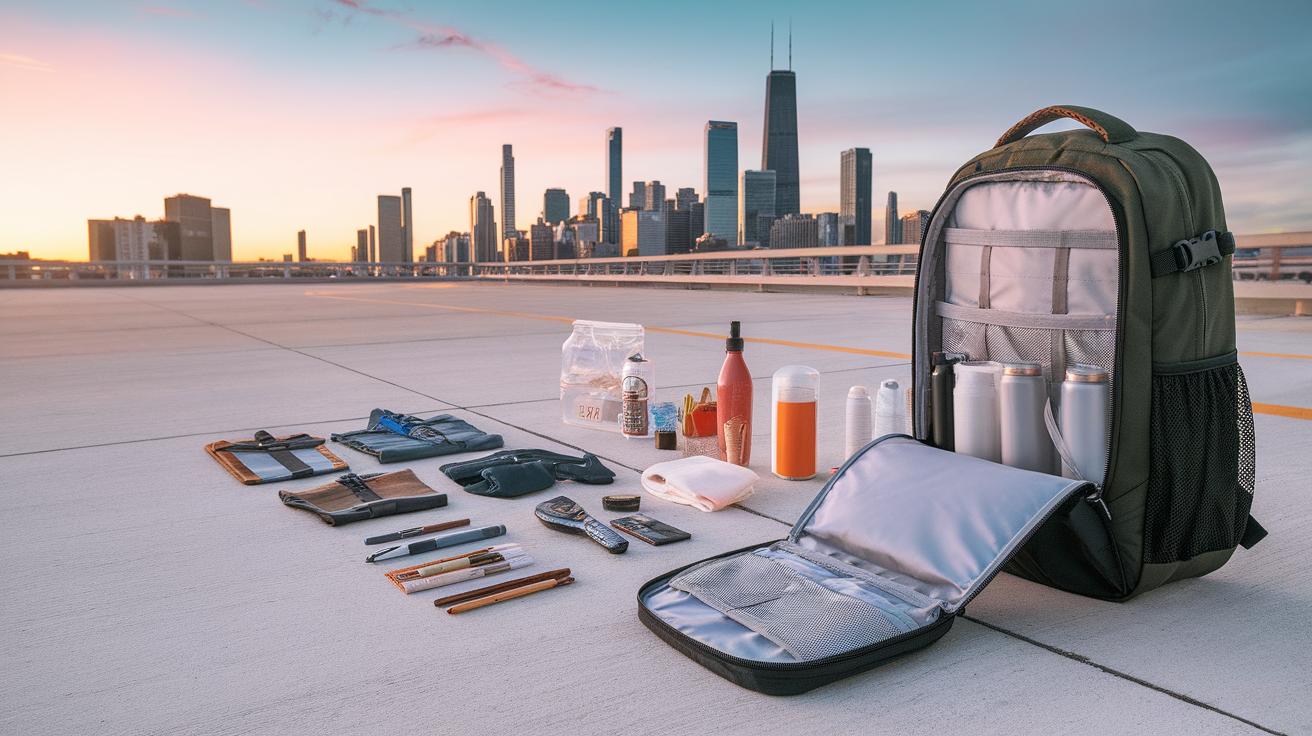
Must Have Items To Pack In Your Emergency Bag Today
Introduction
Emergencies happen without warning. Natural disasters, accidents, or urgent evacuations can disrupt your life at any moment. Having an emergency bag packed with essential items ensures you stay safe and self-sufficient for at least 72 hours. This guide will help you understand the critical supplies you need and why they matter. Your emergency bag can be a life-saving tool during these challenging situations.
Many people underestimate the importance of preparedness. You can choose items that support food, water, shelter, health, and communication. Every item has a purpose, and each one increases your chances of weathering any crisis. Knowing what to pack helps you act fast and stay focused. This article explains the most important categories and items to include in your emergency bag easily and clearly.
Understanding Your Emergency Bag Needs
An emergency bag is a pre-packed collection of items that helps you survive during unexpected disasters or emergencies. It allows you to leave your home quickly while having essentials that support your survival and well-being. You might need this bag during events like natural disasters, power outages, or forced evacuations.
Being ready for at least 72 hours with food, water, first aid, and other supplies gives you a vital buffer while waiting for help or reaching safety. The 72-hour timeline is common because emergency responders often take that long to reach affected areas. Preparing your bag carefully can make a big difference when seconds count.
Understanding your needs means knowing what situations you are most likely to face and adjusting your bag accordingly. A good emergency bag offers peace of mind and practical support when life suddenly changes. What would you grab first in a real emergency?
What is an Emergency Bag
Your emergency bag is a portable kit designed to keep you alive and safe for at least 72 hours if you must leave your home or workplace suddenly. This bag contains vital supplies that help you handle situations like floods, earthquakes, wildfires, or extreme weather.
Being ready means having essentials like food, water, basic medical supplies, a flashlight, and important documents on hand. These supplies should be enough for three days because that period covers common emergency response times. Your goal is to survive comfortably and handle basic needs without relying on outside help.
Do you have a clear plan on where your bag is and what it contains? Preparedness starts with knowing your emergency bag and trusting it can support you through a tough time.
Difference Between Survival Kit and Emergency Kit
Survival kits and emergency kits serve different purposes even though they often get confused. Survival kits focus on wilderness or extended outdoor survival. They contain tools like fire starters, fishing gear, and navigation aids for long-term survival away from modern comforts.
Emergency kits, by contrast, focus on quick evacuation and disaster readiness in urban or home settings. They include items that help you respond to sudden emergencies, such as bottled water, non-perishable food, first aid supplies, and a radio.
The 72-hour emergency kit is about lasting just long enough until rescue or recovery becomes possible. Do you need gear for outdoor survival, or should you prioritize items for urban emergencies? Choose your kit based on your lifestyle and risks.
Essential Water Supplies For Your Emergency Bag
Water plays a key role in surviving any emergency. Your body relies on it for hydration, temperature control, and vital functions. Without water, your chances of lasting more than a few days drop sharply. You must include enough safe water in your emergency bag to stay hydrated under tough conditions.
Think about how you can store water securely and keep it clean. Storing water in durable containers prevents leaks and contamination. Carrying tools for purification means you can treat uncertain water sources during emergencies. These preparations protect you from waterborne illnesses.
How do you plan on accessing safe water if the supply runs low? Do you have the right gear to purify water from streams or taps? These questions inform what essential water supplies go into your emergency bag. Planning for water ensures you can maintain strength and clarity when it matters most.
How Much Water You Need
You need about one gallon of water per person each day for drinking and basic hygiene. For a 72-hour period, pack at least three gallons per person. This amount covers your body’s needs even in hot or stressful conditions.
Staying hydrated helps you think clearly and avoid heat-related illnesses. Dehydration affects your physical and mental performance quickly, which can lead to dangerous situations in an emergency. Carrying enough water reduces these risks.
Consider the number of people depending on your emergency bag. Children and seniors may need slightly less, but it’s safer to prepare for the full gallon each day. What would happen if your stored water ran out sooner than expected? Packing a little extra can make a big difference.
Tools For Water Purification
Water purification tablets are small, lightweight, and kill harmful germs in drinking water. They require little effort to use but need time to work—usually about 30 minutes. Keep a supply of these tablets in your bag.
A portable water filter can remove bacteria, protozoa, and sediment from water. Many filters attach directly to bottles or come as straw-style designs for on-the-spot use. These tools extend your access to clean water beyond what you can carry.
Empty, durable water containers also belong in your emergency bag. They allow you to collect and store water safely after purification. If you rely only on stored water, you risk running out early, but tools for purification help you adapt when needed.
Have you tested your water purification gear before packing? Familiarity with these items ensures quick use during emergencies, avoiding hesitation or mistakes when timing and safety matter most.
Food Choices That Last and Sustain You
Your emergency bag needs food that stays good for a long time and keeps you strong. Choose non-perishable foods that provide enough calories and nutrients to fuel your body during tough times. Focus on items that don’t need cooking or special preparation. Open-and-eat options reduce stress and save precious time during emergencies.
Energy-dense foods like nuts and dried fruits pack calories and vitamins in small packages. Canned goods offer ready-to-eat protein or vegetables with long shelf lives. Think about how easy it is to open these foods without extra tools or heat. Avoid anything that spoils quickly or requires refrigeration.
Ask yourself: Will this food keep me full and healthy for hours or days? Can I access it quickly when I’m on the move? Make food choices that support your survival without adding hassle to your emergency routine.
Best Non-Perishable Food Items
Canned beans, vegetables, and meats deliver nutrients and last years if stored properly. Select cans with pull tabs or pack a manual can opener in your bag. Energy bars come in handy for fast energy and have long expiration dates. Choose those high in protein and fiber for better sustenance.
Dried fruits like apricots, raisins, and cranberries supply natural sugars and vitamins. Nuts such as almonds, walnuts, and peanuts offer healthy fats and proteins to keep hunger at bay. These foods take up little space, weigh less, and fit well in any emergency bag.
Focus on packaging that is compact and unbreakable when possible. Avoid foods that crumble or need water to prepare, since water might be limited. Keeping your food stash fresh and accessible lets you stay ready without worry.
Planning For Dietary Needs
Your emergency food pack should respect your personal diet. If you have allergies to nuts, gluten, or dairy, avoid including those foods. Pack alternatives to meet your calorie and nutrient needs without risking health issues.
Consider if you follow vegan, vegetarian, or low-sodium diets. Choose canned or packaged foods that meet these criteria. Taking time to customize your food supply helps you feel secure and ready to handle emergencies safely.
Have you reviewed your food options with your dietary needs in mind? Emergency situations demand care in preparation. Protect yourself by packing foods that suit you personally, not just generic items.
First Aid Kit MustHaves
Your emergency bag should include a first aid kit that covers basic medical needs. Bandages come in various sizes to handle cuts and scrapes quickly. Gauze pads and sterile dressings help manage deeper wounds and control bleeding. Antiseptic wipes or solutions prevent infections by cleaning the injury area before applying dressings.
Tools like tweezers can remove splinters or debris from wounds. A pair of scissors helps cut tape or clothing if needed. Disposable gloves protect you from germs while treating injuries or assisting others.
These supplies allow you to offer basic medical care and limit complications until professional help arrives. Can you imagine how much harder it would be to handle even minor injuries without these items? Packing them today means you get peace of mind for any situation.
Basic First Aid Supplies
Small but critical items like adhesive bandages come in various shapes, useful for covering cuts of different sizes. Gauze pads act as absorbent dressings when blood or fluids need to be controlled. Antiseptic wipes clean wounds and reduce the risk of infection quickly.
Pain relievers such as ibuprofen or acetaminophen relieve discomfort and reduce inflammation. Including medical tape keeps dressings securely in place over wounds. Don’t forget an instant cold pack to control swelling from minor bumps or bruises.
What cuts or injuries have caught you off guard in the past? Preparing these basic supplies lets you respond faster and with more confidence when emergencies arise.
Medications and Personal Health Items
Including prescription medications in your emergency bag is vital if you rely on daily doses. Pack enough to last several days or longer, and store them in waterproof containers. Don’t overlook allergy medicine or inhalers if you have conditions like asthma or severe allergies.
Items like antacids or anti-diarrheal tablets manage common ailments during stressful situations. If you take vitamins or supplements for health reasons, consider adding those too.
What health needs should your emergency kit address? Reviewing your personal and family health reminders ensures the right treatment is on hand when you face uncertainty.
Tools for Shelter and Warmth
Your emergency bag should include gear that helps you create shelter and maintain warmth quickly. Shelter protects you from wind, rain, and cold, which can become life-threatening if ignored. A compact tarp is lightweight and versatile; you can rig it up as a makeshift roof or windbreak using cords or nearby trees. Emergency blankets are small but reflect body heat efficiently, making them useful when you need fast warmth. A small, foldable tent offers more comfort and protection when you expect to remain in one spot for longer. Have you tried setting up a tarp or emergency blanket before? Practicing now helps you use these items confidently when it counts.
Portable Shelter Options
Tarps work well for quick shelter. They are easy to carry and take a few minutes to set up. Use a tarp with paracord to build a lean-to or an A-frame shelter. Compact tents provide better protection from insects and weather but take more space and time. Emergency blankets serve multiple roles: ground insulation, rain cover, or windbreaker. Their reflective surface traps heat effectively despite their small size. Can you spot places around your home or outdoors where a tarp or blanket could shield you from the weather? Knowing where to put up your shelter expedites action in tough situations.
Clothing for Different Conditions
Packing clothing in layers lets you adjust for changing weather. Base layers wick moisture; mid-layers provide insulation; outer layers protect against rain and wind. Choose synthetic or wool fabrics as they dry faster and keep warmth even when damp. Include a waterproof jacket or poncho to stay dry during storms. Don’t forget sturdy boots or shoes with good grip for rough terrain. Extra socks and gloves add warmth and prevent blisters or frostbite. What clothes do you feel most comfortable in during cold or wet weather? Prioritize these in your emergency bag for practical, reliable warmth and protection.
Communication and Navigation Tools
Keeping track of what’s happening around you during an emergency can save your life. Your emergency bag should include tools that help you stay informed and find your way if needed. Radios that run on batteries or can be hand-cranked allow you to receive weather updates and emergency alerts even when power is out. Do you know how long your phone’s battery lasts in a crisis? Carrying a portable charger or power bank ensures your phone stays charged for calls or GPS use.
Navigation tools like compasses and local maps are vital when landmarks disappear or roads are blocked. A whistle can help signal rescuers if you’re lost or trapped. Would you hear a rescuer if they shouted from a distance? A whistle’s sound carries much farther. Together, these communication and navigation items keep you connected and improve your chances of getting help quickly.
Staying Connected and Aware
Emergency radios can receive information when other devices fail. Battery-powered or hand-crank radios work without relying on cell towers or electric grids. When dangerous storms or disasters strike, these radios broadcast timely alerts from emergency services and officials. This information helps you make smart decisions, like when to evacuate or shelter in place.
A hand-crank radio is especially useful if batteries run out. You turn a handle to generate power, so you never lose access. Think about times you lost phone signal but still had news on the radio. Such radios allow you to stay updated when most technology goes dark. Your emergency bag is not complete without one. They keep you informed even in chaotic situations.
Finding Your Way
When roads are blocked or you have to move on foot, knowing how to navigate can prevent dangerous detours. A compass works without batteries and helps you stay on course. Combining a compass with local topographic maps lets you plan safe routes. Have you ever tried to find your way without a map? It quickly becomes confusing.
Whistles are essential for signaling without shouting. They can alert rescuers to your location, especially where noise spreads farther than voices. Blowing three short blasts on a whistle is the universal distress signal, easy to learn and remember. Carrying a whistle means you can call for help if you’re lost or trapped. These simple tools make navigation and signaling more reliable when technology fails.
Everyday Carry Tools With Multiple Uses
Your emergency bag should include tools that handle many tasks. A Swiss Army knife combines blades, screwdrivers, scissors, and sometimes even small saws into one compact device. These tools help you cut rope, open cans, or make quick repairs on the go. Multi-tools often feature pliers, wire cutters, and other handy functions that serve in fixing gear or building shelter.
Strong paracord is another essential. It can work as a fishing line, tie items together, or even serve as a makeshift tourniquet. Having a few versatile tools decreases the weight and space in your bag but gives you more problem-solving options during emergencies.
Think about how often you need to improvise in daily life. Wouldn’t having one or two reliable, multi-purpose tools ease your challenges in unexpected situations? Carrying tools that pack multiple functions saves time and effort when every action counts.
Why Choose Multi-Use Tools
Tools like the Leatherman Wave or Victorinox Swiss Army Knife stand out because they store many functions in one spot. Need to open a tin of food? The can opener is ready. Facing tangled gear? Use the scissors or pliers.
These tools cover basic cutting, tightening screws, and small repairs without carrying a bulky toolbox. The versatility means you don’t have to guess what gear might be missing in an emergency. When water bottles leak or zipper pulls break, your multi-tool solves the problem faster than searching for a specific single-use item.
Have you ever been caught without the right tool? Choosing multi-use equipment reduces that risk and maximizes your preparedness. They offer reliable, quick fixes that keep your focus where it needs to be—survival and safety.
Additional Useful Accessories
Duct tape is a must-have for quick fixes on everything from tents to clothing. It can stop leaks, mend torn fabric, or even fashion makeshift splints. Safety pins earn a spot for securing bandages or holding broken gear together temporarily.
Fire starters, like ferro rods or waterproof matches, support your ability to cook, stay warm, and signal for help. Carry small amounts of these accessories throughout your bag, so you always have something handy.
Think of these items as small but vital pieces in your emergency gear puzzle. How would you manage a shelter breach or emergency burn without easy solutions? Packing these extras boosts your overall resilience in sudden situations.
Personal Hygiene and Sanitation Items
Maintaining personal hygiene in an emergency keeps illnesses at bay. When conditions are tough, germs spread quickly. You can avoid infections by cleaning your hands and body regularly. Pack items like antibacterial wipes and hand sanitizer. These help when water is limited or unavailable. Include toothbrush and toothpaste to take care of oral health. Feminine products matter too. Comfort and health depend on having them during long stays. Ignoring hygiene can lead to skin problems or worse. Imagine coping with a cut that gets infected because your hands were dirty. How would you feel managing pain or a fever with no medical aid? Keeping your emergency bag stocked with hygiene items helps protect your body and mind when you need it most.
Maintaining Cleanliness
You should include practical hygiene supplies that last. Travel-sized soap bars or liquid soap help remove dirt without wasting water. Pack a small towel or microfiber cloth for drying. Antibacterial hand wipes can clean your hands between washes. Toothbrush, toothpaste, and dental floss prevent mouth issues. Add a comb or brush to keep your hair neat and avoid lice. Feminine hygiene products like pads or tampons ensure comfort. Lip balm prevents chapped skin during outdoor stays. Consider a small mirror to check wounds or maintain grooming. How will you feel after days without proper hygiene? Staying clean cuts the risk of sickness and keeps you more comfortable in tough situations.
Sanitation Solutions
Emergencies often mean losing access to toilets and trash pickup. Plan for waste disposal to avoid health hazards. Small, sealable plastic bags serve as disposable toilets. Line a bucket with one and close tightly after use. Carry extra bags for trash, especially items like used wipes or feminine products. Carrying biodegradable bags helps reduce environmental impact. Pack toilet paper or tissues stored in waterproof containers. Consider hand towels or cloths designated for sanitation tasks only. Cleaning supplies like bleach wipes can disinfect surfaces. What will you do if you get sick and need to isolate? Knowing how to manage waste safely prevents contamination and keeps your shelter healthy.
Planning and Customizing Your Emergency Bag
Assessing Your Risks and Needs
Start by thinking about where you live. Is your area prone to floods, earthquakes, or severe winters? Your emergency bag should reflect the kinds of challenges you might face. For example, if you live in a cold climate, include extra warm clothes or a thermal blanket. If wildfires are common, pack a dust mask and goggles to protect your eyes and lungs.
Consider who will use the bag. Families with small children need extra supplies like baby food, diapers, and favorite comfort items. Older adults might require medications or mobility aids. Pets also need their own food and water. What medical conditions do you or your family members have?
Think about the length of time you may need to survive on your own. Should your bag support you for 24 hours, three days, or longer? The more you understand your personal and local risks, the smarter your packing choices will be.
Regular Maintenance and Updates
Check your emergency bag every few months. Look at expiration dates on food, water, and medicine. Swap out anything that is expired or damaged. Make sure batteries still work and replace them if needed. This small effort ensures your bag is always ready.
Reassess your family’s needs regularly. Have your children outgrown their clothes in the bag? Do you still have the correct medications for everyone? If your living situation changes, update your pack accordingly.
Use a checklist to track items and dates. Set a reminder on your phone to review your bag, so it doesn’t get ignored. Keeping your emergency bag current protects you from surprises when an emergency strikes.
Conclusions
Keeping an emergency bag ready can make a big difference when time is critical. You hold the power to protect yourself and loved ones by selecting the right items and understanding their role in survival. This preparation gives peace of mind and practical benefits during unexpected situations.
Review your emergency bag often and adapt it to your current needs and situation. Emergency planning is not a one-time task but an ongoing process. Make packing and updating your bag a priority today to face any emergency with confidence and preparedness.

